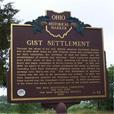
Summary: Black Methodists and Baptists celebrate Watch Night, December 31, 1862: the Emancipation Proclamation would go into effect at midnight. This is why the celebration continues in African American churches today, striking a more joyous note than prior penitential Watch Nights. The Emancipation Proclamation applied only to enslaved Africans of the Confederate States. The prayer meeting congregation depicted in Carlton’s painting consists of former enslaved Africans that migrated to Union territory during the Civil War Carlton’s painting is variously called “Watch Night — Waiting for the Hour” or ” Watch Meeting–Dec. 31st, 1862.” It was sent to President Lincoln by abolitionist William Lloyd Garrison The makeshift pulpit is made of boards salvaged from crates. The minister’s timepiece reads 11:55. Carlton’s painting is variously called “Watch Night — Waiting for the Hour” or ” Watch Meeting–Dec. 31st, 1862.” It was sent to President Lincoln by abolitionist William Lloyd Garrison The painting now hangs in what is called the Lincoln Bedroom, really that president’s study and Cabinet Room, over the desk upon which he signed the Emancipation Proclamation on the afternoon of New Year’s Eve, 1862. William Washington Browne, educator and businessman, organized the True Reformers Savings Bank in Richmond, VA, the first black bank in the U.S. to receive a charter. At its peak in 1907, it took in more than $1 million in deposits. The bank expanded into realestate and a newspaper, it operated in&
